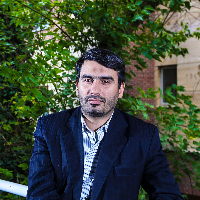Conceptual Typology of Synagogues, Churches and Mosques during Safavid Era based on Sacred Attributes of Incomparability, Similarity, Beauty and Glory
Places of worship, as symbolic spaces, have played a key role in all religions. In this respect, they differ from other buildings with different functions. However, the presence of places of worship belonging to different religions in the same city or town has been based on identity differentiations. Given the rapidly growing virtual communications in today›s world, it has become even more important to pay serious attention to identity differentiations concerning places of worship. The present study aimed to make a typology of Synagogues, Churches and Mosques in Isfahan- Persian capital during Safavid era. The implication of a comparative comparison among the mentioned places of worship, in terms of symbolic and spiritual concepts, can help contemporary architects and designers to build such buildings. Therefore, the symbolic differentiations, especially those concerning mosques, can be taken into consideration to design and build mosques. The main questions of this study include: what are the identity differentiations among the synagogues, churches and mosques? And, to what extent such differentiations are rooted in spiritual foundations of each religion? The hypothesis of this study is that different readings of Sacred Attributes are reflected in different physical characteristics of different places of worship. Here, considering four scared concepts, that is, attributes of similarity, attributes of incomparability, attributes of beauty and attributes of glory, the built places of worship in Isfahan were studied under three distinct types: similarity-beauty; incomparability-glory and similarity-beauty/ incomparability-glory. Then, keeping the mentioned sacred concepts in mind, the physical characteristics of the built places of worship were examined. Data were gathered based on library sources and attributional studies and then were analyzed comparatively. The criteria applied were examined through a comparative approach among the worship places. Similarly, the results were obtained based on an analytic reasoning. Also, the normative architectural hypothesis of the worship places aimed to prove its validity based on logical reasoning in order to reach a kind of semiotic typology for the Abrahamic worship places. In this respect, the worship places should be chosen synchronically. The most justifiable historical era for the present study seemed to be Safavid era in which minor religions had the privilege of relative freedom. With this aim in view, the most typical cases of each religious worship place were identified. For example, Mushe Haya Synagogue built in Safavid era is a noteworthy case. Major parts of the synagogue have been damaged and only the room of inscriptions, dating back to Safavid era, has survived. The damaged parts were restored in Qajar era. Another synagogue which could provide the researchers with characteristics challenging the proposed hypothesis was Mulah Neisan synagogue. It dates back to about 100 years ago. The Shah Mosque also known as Imam Mosque or Jaame Abbasi Mosque was another case intended for the study. Situated at the southern side of Naqsh-e-Jahan Square, was built between the years 1598 and 1629 under Shah Abbas. Construction of the mosque started in the 24th year of coronation and decorations and additions were completed during the Shah successors. By constructing the mosque, Shah Abbas intended to pay tribute to his grandfather. Vank Cathedral was constructed under Shah Abbas II in Julfa neighborhood, Isfahan. The Cathedral has functioned as a place to hold religious ceremonies, to instruct the priests and to communicate with other Armenians worldwide. The results indicated that churches were among the Similarity-beauty-based type which convey a strong sense of symbolism, intimacy and invitation. Also, in churches natural representations are highly respected, large-scale proportions are applied, high-quality materials are used and spatial variety and movement hierarchy are taken into consideration. A prime example of this is Vank Cathedral. Synagogues, in contrast, enjoy the incomparability-glory attribute. They covey the minimum sense of symbolism and natural representations are reflected only very softly. Proportions are realistic and no costly materials have been used. Spatial variety is also at minimum. Moshe Haya synagogue is a good example. Mosques, in terms of characteristics mentioned stand in-between and are, in fact, similarity-beauty/ incomparability-glory in character. Abbasi Gathering Mosque (masjid-e-Jame Abbasi) is the best example for this. In conclusion, it may be said that synagogues have the lowest inclination to luxury. In contrast, churches have the highest inclination to luxury. Also, worship places in Abrahamic religions have passed through a incomparability-to-beauty process. The best example of this can be seen in Mushe Haya and Mulah Neisan synagogues. Although the latter is more luxurious than the former, they are both less luxurious than Vank Cathedral and Jaame› Abbasi Mosque.
Synagogue , Church , Mosque , Similarity , Incomparability , Beauty , Glory
- حق عضویت دریافتی صرف حمایت از نشریات عضو و نگهداری، تکمیل و توسعه مگیران میشود.
- پرداخت حق اشتراک و دانلود مقالات اجازه بازنشر آن در سایر رسانههای چاپی و دیجیتال را به کاربر نمیدهد.


